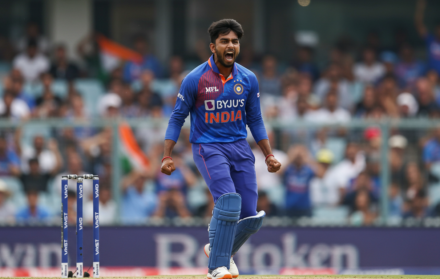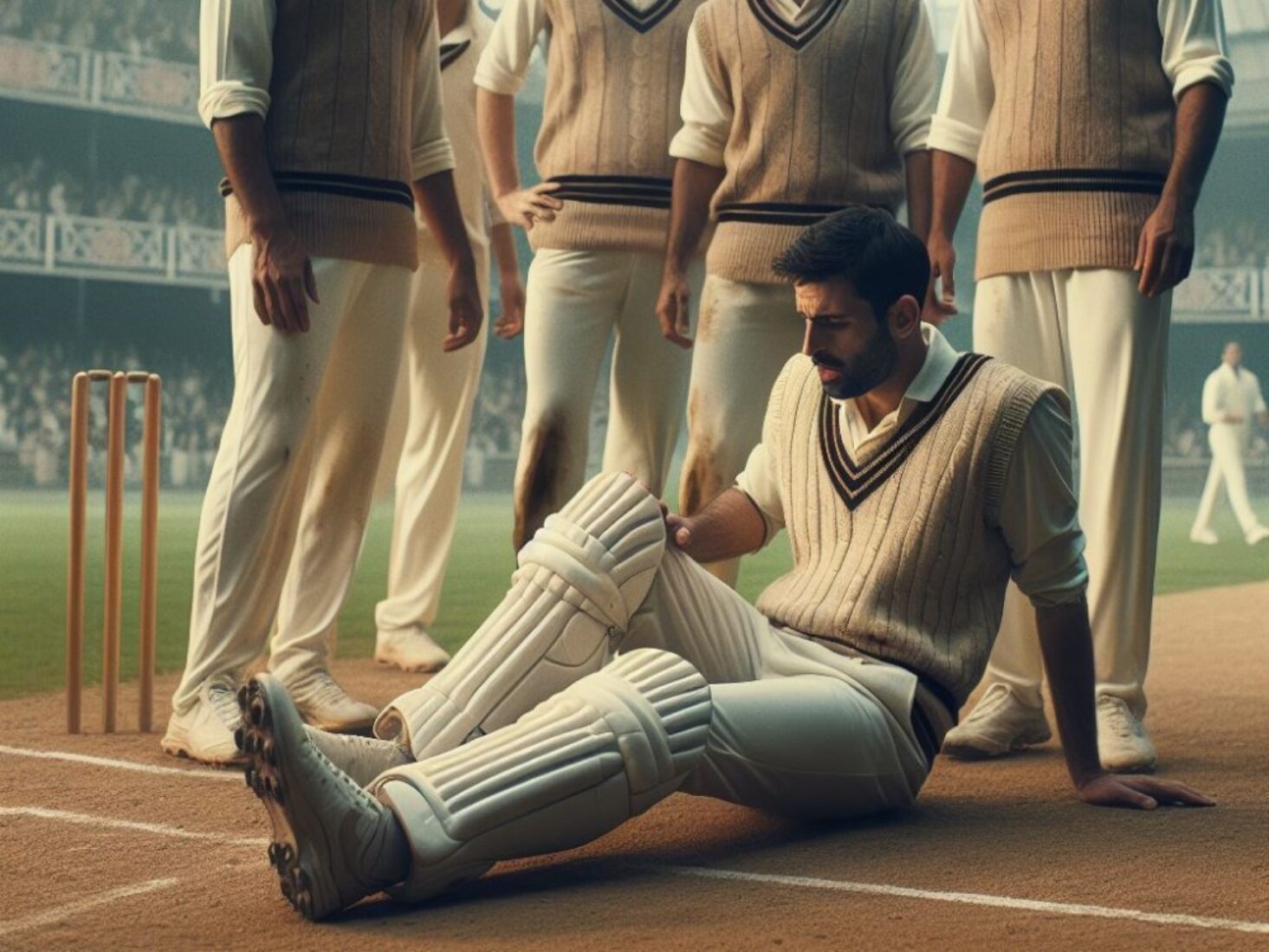
Conquering Cricket Injuries: How Players Bounce Back from the Wicket
Injuries are an inherent part of any sport, and cricket is no exception. Cricketers put their bodies under tremendous physical strain, making them susceptible to various types of injuries. Understanding how to deal with cricket injuries is crucial to their overall well-being and successful return to the game.
Before delving into the specifics of injury management and treatment, it is important to first identify the common types of injuries in cricket. These can range from muscle strains and sprains to ligament and tendon injuries, fractures and dislocations, as well as overuse injuries due to the repetitive nature of the sport.
Preventing injuries in cricket is a key aspect of any player’s routine. This involves incorporating pre-game warm-up exercises to prepare the body for the physical demands of the game. maintaining optimal fitness levels and conditioning can significantly reduce the risk of injuries.
When injuries do occur, knowing how to manage and treat them is essential. Immediate first aid measures should be taken to mitigate further damage, and knowing when to seek medical attention is crucial for proper diagnosis and treatment. Rehabilitation and recovery play a vital role in the journey back to the game, focusing on restoring strength, mobility, and functionality.
Dealing with specific cricket injuries requires a targeted approach. Muscle strains and sprains, ligament and tendon injuries, fractures and dislocations, and overuse injuries all necessitate their respective management strategies.
Injuries in cricket not only have physical implications but also psychological impact. Dealing with the mental stress of injuries is crucial for a player’s overall well-being. Sports psychology plays a significant role in injury rehabilitation, offering techniques and strategies to cope with the challenges and maintain a positive mindset throughout the recovery process.
By understanding the common types of injuries, implementing preventive measures, effectively managing and treating injuries, and addressing the psychological impact, cricketers can navigate the challenges of injuries and embark on a successful journey towards recovery and returning to the game they love.
What are the Common types of Injuries in Cricket?
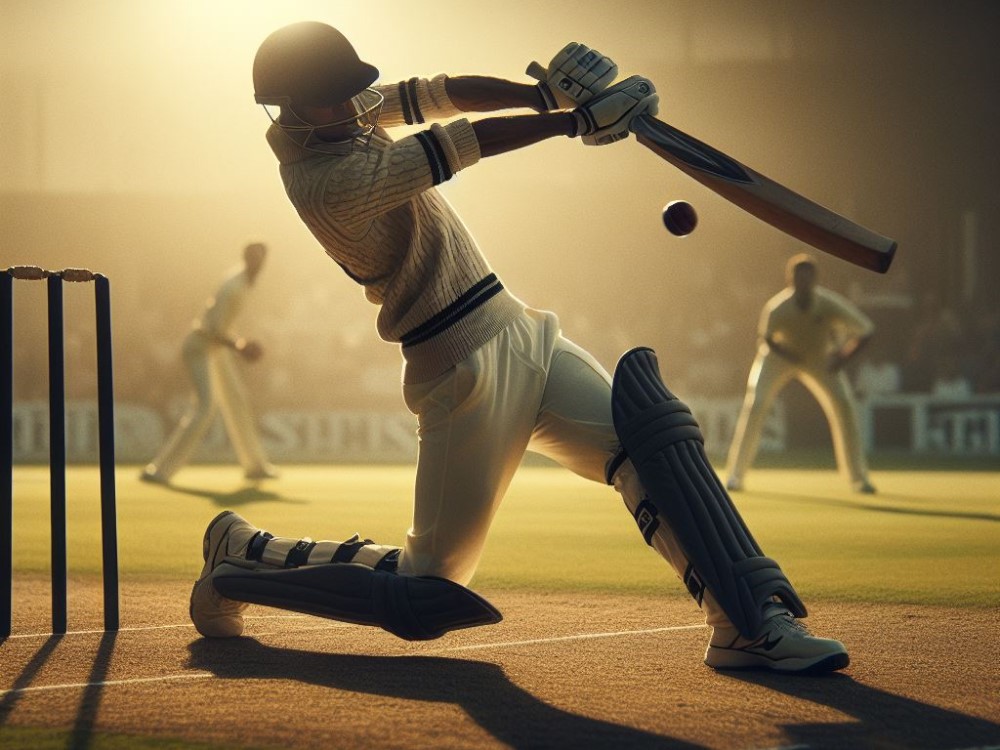
Common types of injuries in cricket include impact injuries and overuse injuries. Impact injuries occur as a result of direct contact, such as being hit by a cricket ball. Overuse injuries, on the other hand, develop gradually due to repetitive motions, like throwing or bowling.
Region-wise, injuries in cricket commonly occur in the lower extremities, followed by the upper extremities and the spine. It is crucial for cricketers to prioritize injury prevention through warm-up exercises, maintaining physical fitness and conditioning, and seeking proper medical attention when needed.
Pro-tip: Incorporating strength and flexibility training into your fitness routine can help minimize the risk of common cricket injuries.
Preventing Injuries in Cricket
To prevent injuries in cricket, players should follow these steps to ensure their safety and well-being:
1. Warm up properly before playing to prepare the body for intense physical activity. This will help prevent strains and injuries.
2. Use proper techniques and form while bowling, batting, and fielding to avoid putting unnecessary strain on muscles or joints. This will significantly reduce the risk of injuries.
3. Wear appropriate protective equipment, such as helmets, pads, and gloves, to shield against potential injuries. These items act as a barrier and provide necessary protection.
4. Take adequate breaks and rest days to allow the body to recover and prevent overuse injuries. It is essential to give your body enough time to heal and rejuvenate.
5. Stay hydrated throughout the game to prevent muscle cramps and fatigue. Dehydration can lead to reduced performance and increase the risk of injuries.
6. Engage in regular strength and conditioning exercises to build overall fitness and prevent imbalances or weaknesses. This will help strengthen muscles and improve endurance, reducing the likelihood of injuries.
7. Listen to your body and address any discomfort or pain promptly to avoid exacerbating injuries. Ignoring the signs can lead to further harm.
By implementing these preventive measures, players can effectively reduce the chances of sustaining injuries during cricket matches. Stay safe and enjoy the game!
What are the Pre-game Warm-up Exercises?
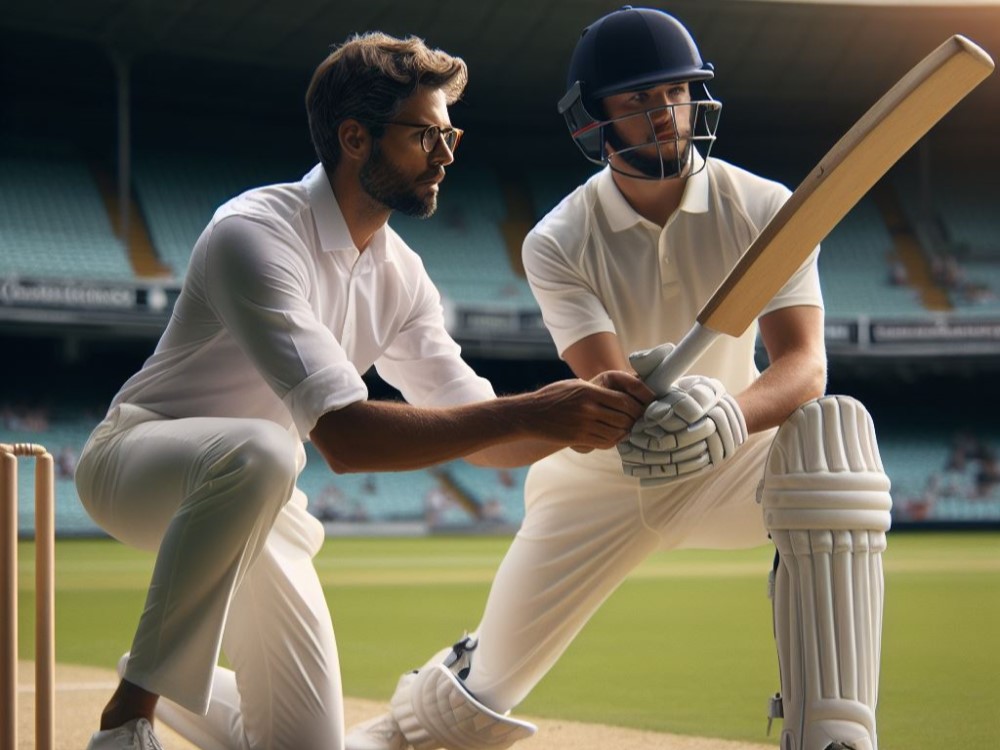
Pre-game warm-up exercises are crucial in preparing cricketers physically and mentally for the game. They help enhance blood flow, loosen muscles, and improve flexibility, reducing the risk of injuries. So, what are the pre-game warm-up exercises?
Here are some beneficial warm-up exercises that should be included:
- Importance: Warm-up exercises enhance blood flow, loosen muscles, and improve flexibility, reducing the risk of injuries.
- Body warm-up: Perform exercises like jogging, skipping, or cycling to increase heart rate and warm up the entire body.
- Stretching: Include dynamic stretches that mimic cricket movements, focusing on the major muscle groups used in the game.
How Can Fitness and Conditioning Help Prevent Injuries?
Fitness and conditioning play a crucial role in preventing injuries in cricket. Incorporating regular exercise and conditioning routines can help cricketers enhance their strength, endurance, and flexibility, reducing the risk of injuries.
Here are some ways in which fitness and conditioning can help prevent injuries in cricket:
- Improves muscle strength and stability to support joints during demanding movements.
- Enhances flexibility and range of motion, reducing the likelihood of muscle strains and joint injuries.
- Increases cardiovascular fitness, allowing players to sustain high-intensity efforts without fatigue, minimizing the risk of injuries due to exhaustion.
- Develops agility, coordination, and balance, improving body control during quick movements and reducing the chance of tripping or falling.
- Boosts bone density and reduces the risk of stress fractures, a common overuse injury in cricket.
By prioritizing fitness and conditioning, cricketers can optimize their physical abilities and minimize the occurrence of injuries, leading to better performance and longevity in the sport.
Managing and Treating Cricket Injuries
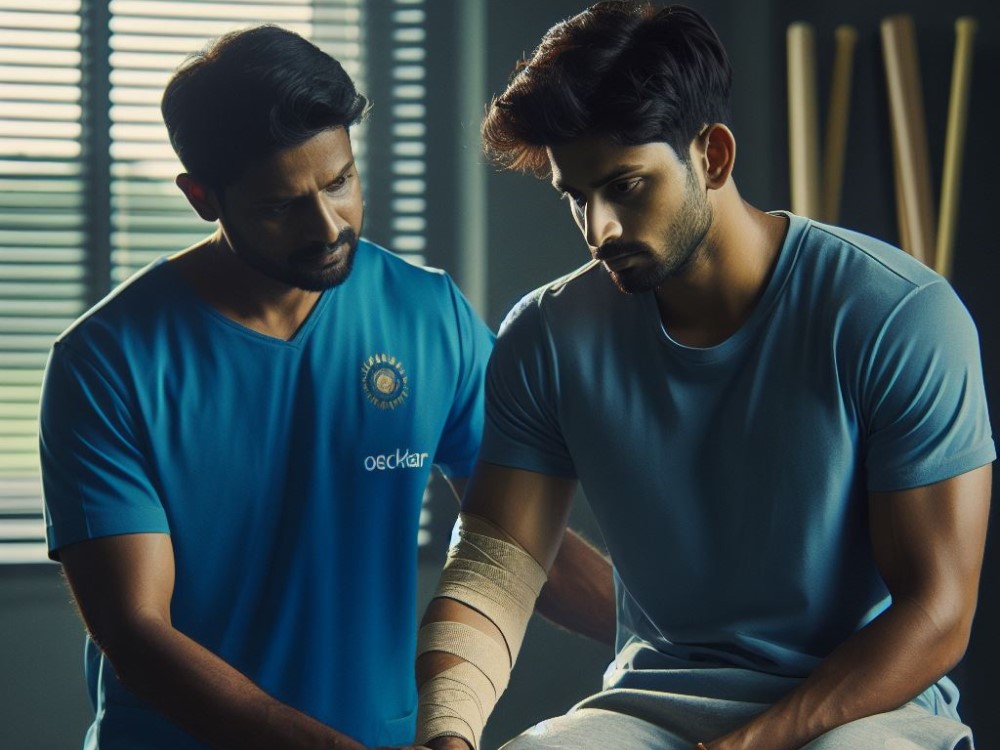
Managing and treating cricket injuries is of utmost importance to ensure the well-being and performance of cricketers. Here are some key strategies for effectively dealing with these injuries:
- Immediate care: It is crucial that the injured player receives immediate medical attention and follows a proper first aid protocol.
- Rehabilitation: The rehabilitation programs should include exercises that specifically target strengthening the injured area and enhancing flexibility.
- Rest and recovery: Sufficient rest and adequate recovery time are absolutely essential to facilitate the healing process of the injured player’s body.
- Professional guidance: It is essential to seek assistance from qualified medical professionals specializing in sports injuries to ensure accurate diagnosis and appropriate treatment.
- Prevention: Taking proactive measures to prevent injuries is vital. This includes following proper warm-up routines, wearing appropriate protective gear, and maintaining overall fitness.
What is the Immediate First Aid for Cricket Injuries?
- Assess the injury: Determine the severity and type of injury to provide appropriate care.
- RICE method: Rest the injured area, apply ice to reduce swelling, compress with a bandage, and elevate the affected limb.
- Control bleeding: Apply gentle pressure to any open wounds to control bleeding and cover with a clean cloth or bandage.
- Immobilize the injury: Stabilize fractures or joint injuries by using splints or slings to prevent further damage.
- Pain relief: Administer over-the-counter pain medications if necessary, or use cold packs to ease pain and reduce inflammation.
- Seek medical attention: If the injury is severe or not improving, seek professional medical help for proper diagnosis and further treatment.
Remember, immediate first aid is just the initial step, and professional medical evaluation should follow for a comprehensive recovery plan.
When Should a Cricketer Seek Medical Attention?

In the world of cricket, it is crucial for cricketers to prioritize their health and seek medical attention promptly to prevent further damage and enable a safe return to the game. The decision of when a cricketer should seek medical attention depends on the severity of the injury and their ability to continue playing.
Immediate medical attention should be sought for injuries that cause severe pain, bleeding, or joint instability. These types of injuries require prompt professional help to ensure proper diagnosis, appropriate treatment, and a faster recovery.
However, if the injury does not improve within a few days of rest and self-care measures, it becomes necessary for cricketers to seek professional help. By doing so, they can receive the proper medical attention they need.
Overall, cricketers should be mindful of their health and not hesitate to seek medical attention when necessary. By doing so, they can take the necessary steps towards healing and getting back in the game safely.
Rehabilitation and Recovery from Cricket Injuries
To ensure a proper recovery from cricket injuries, it is vital to follow a comprehensive rehabilitation program. This program should encompass a variety of elements, including therapeutic exercises, physical therapy, and gradual return to play protocols.
Each injury will have specific requirements when it comes to rehabilitation exercises. For example, muscle strains and sprains will require strengthening exercises, while ligament and tendon injuries will need mobilization techniques. In the case of fractures and dislocations, immobilization is necessary.
It is crucial to gradually increase activity levels while closely monitoring progress to prevent any re-injury. Remember to always seek guidance from a sports medicine professional who can create a personalized rehabilitation plan catered to your specific needs. This will ensure a safe and effective recovery from cricket injuries.
Dealing with Specific Cricket Injuries

Dealing with specific cricket injuries requires a systematic approach to ensure proper recovery and prevention of further damage. Here are key steps to follow:
- Assessment: Identify the type and severity of the injury through medical evaluation or imaging.
- Treatment: Employ appropriate measures like rest, physiotherapy, and medication prescribed by specialists.
- Rehabilitation: Gradually reintroduce exercises and activities to regain strength, flexibility, and functionality.
- Prevention: Utilize preventive measures such as warm-up routines, proper technique, and protective gear to minimize the risk of reinjury.
A fact: “According to a study by the British Journal of Sports Medicine, the most common cricket injuries are hamstring strains, followed by shoulder and hand injuries.”
How to Deal with Muscle Strains and Sprains?
To effectively manage muscle strains and sprains in cricket, here are the steps you should follow:
- Immediate Response: When dealing with a muscle strain or sprain, it is important to first pause the game and assess the injury. Apply ice to the affected area in order to reduce swelling, and elevate the injured area for optimal relief.
- Rest and Immobilization: To aid in the healing process, it is crucial to avoid placing any weight on the injured muscle. If necessary, utilize crutches or a sling for additional support. Rest is key for a successful recovery.
- Compression: To provide support and minimize swelling, wrap the injured area with an elastic bandage.
- Elevation: Elevating the injury above heart level can further aid in reducing swelling and promoting healing.
- Pain Relief: Managing pain and inflammation is important. Over-the-counter pain medications such as ibuprofen can be taken for relief.
- Rehabilitation Exercises: Once the initial pain and swelling have subsided, it is time to gradually introduce gentle stretching and strengthening exercises. Seek the guidance of a medical professional or physiotherapist for proper assistance.
- Gradual Return to Play: To prevent re-injury, it is essential to return to cricket slowly and progressively increase the intensity of training and matches.
How to Deal with Ligament and Tendon Injuries?
- Immediate care: Rest, ice, compression, and elevation to reduce swelling.
- Medical evaluation: Consult a healthcare professional for accurate diagnosis and treatment plan.
- Immobilization: Use braces, splints, or casts to stabilize the injured area.
- Physical therapy: Perform exercises to strengthen the muscles around the injury and restore range of motion.
- Progressive return to sport: Gradually reintroduce cricket activities under professional guidance.
Remember, every injury is unique, so it’s essential to follow medical advice for swift and safe recovery. Incorporating proper warm-up, conditioning, and maintaining overall fitness can help prevent such injuries in the first place.
How to Deal with Fractures and Dislocations?
- How to Deal with Fractures and Dislocations: Recognize the injury – Properly assess the severity of the fracture or dislocation.
- Immediate first aid: Stabilize the affected area to prevent further damage and minimize pain.
- Seek medical attention: Consult a healthcare professional who can provide accurate diagnosis and appropriate treatment.
- Treatment options: Depending on the extent of the injury, treatment may involve immobilization, splinting, or surgical intervention.
- Rehabilitation: A structured rehabilitation program is crucial for optimal recovery, including exercises to regain strength and mobility.
- Gradual return to play: Under the guidance of medical professionals, slowly reintegrate into cricket activities, monitoring progress closely.
- Prevention measures: Take necessary precautions, such as using protective equipment and practicing proper technique to reduce the risk of future fractures and dislocations.
How to Deal with Overuse Injuries?
- Recognize the signs. Be aware of the symptoms of overuse injuries, such as persistent pain, swelling, or decreased performance.
- Rest and recovery: Take breaks from repetitive motions and allow your body time to heal. Rest is crucial in preventing further damage.
- Modify training: Adjust your training routine to include cross-training activities that work different muscle groups and reduce strain on specific areas.
- Strengthen weak areas: Focus on strengthening the muscles and joints that are prone to overuse injuries through targeted exercises.
- Proper technique: Ensure you have correct form and technique while playing to avoid unnecessary stress on your body.
Remember, early intervention is key in managing overuse injuries. If symptoms persist, consult a medical professional for a comprehensive assessment and tailored treatment plan.
Psychological Impact of Injuries on Cricketers

Injuries can have a significant psychological impact on cricketers. The psychological impact of injuries on cricketers includes the fear of re-injury or being unable to perform at their best, which can lead to anxiety and depression.
Moreover, the pressure of returning to the game quickly can also add to the stress. To effectively cope with these challenges, cricketers often seek support from sports psychologists who specialize in addressing the psychological impact of injuries.
These professionals help cricketers develop a positive mindset, manage their emotions, and build resilience. They employ various techniques such as visualization, mindfulness, and goal-setting to enhance the mental well-being of injured cricketers and facilitate a successful return to the game.
How to Cope with the Mental Stress of Injuries?
Are you wondering how to cope with the mental stress of injuries in cricket? Well, understanding and implementing various coping strategies is key:
- Acknowledge emotions: Recognize and accept the range of emotions that come with being injured.
- Stay positive: Focus on the aspects of recovery within your control and maintain an optimistic mindset.
- Seek support: Talk to friends, family, or fellow cricketers who can provide understanding and encouragement.
- Set small goals: Break down the recovery process into manageable steps to maintain motivation and a sense of progress.
- Stay engaged: Stay involved with the team by attending matches, offering support, or assisting in non-playing roles.
- Engage in visualization: Use mental imagery techniques to visualize successful performance and facilitate healing.
- Adopt stress management techniques: Practice relaxation techniques like deep breathing, meditation, or yoga to reduce stress levels.
- Focus on mental well-being: Engage in activities outside of cricket that bring joy and fulfillment to maintain a balanced mindset.
- Consult a sports psychologist: Seek professional help if the mental stress becomes overwhelming or interferes with recovery.
What is the Role of Sports Psychology in Injury Rehabilitation?
Sports psychology plays a crucial role in injury rehabilitation, assisting cricketers in recovering both physically and mentally. It emphasizes the psychological aspects of the injury, including coping with mental stress, building resilience, and improving performance.
By addressing the emotional challenges associated with being injured, athletes can sustain motivation, maintain focus, and adhere to their rehabilitation program. Additionally, sports psychologists offer techniques and strategies to effectively manage setbacks, anxiety, and the fear of re-injury.
Seeking support and guidance from a sports psychologist significantly contributes to the successful recovery and return to play for cricketers.

